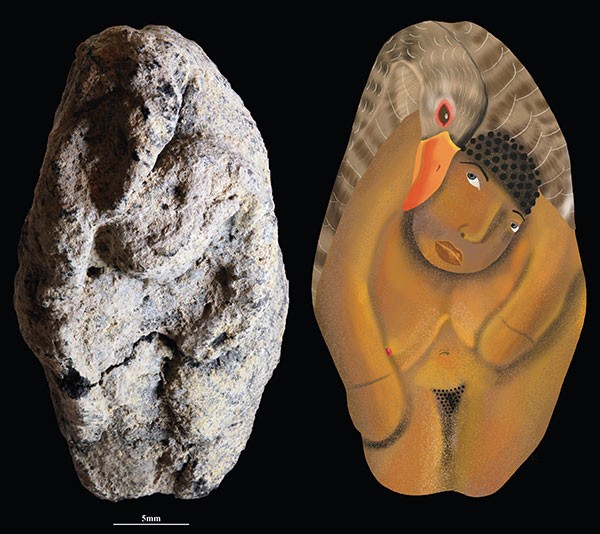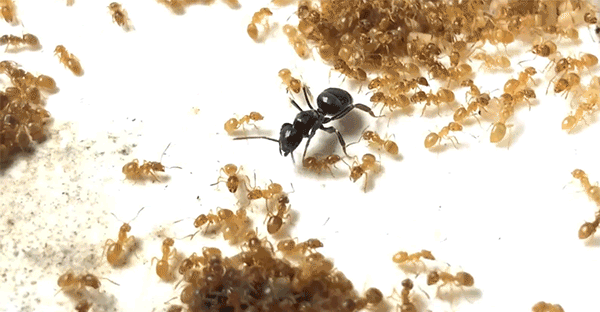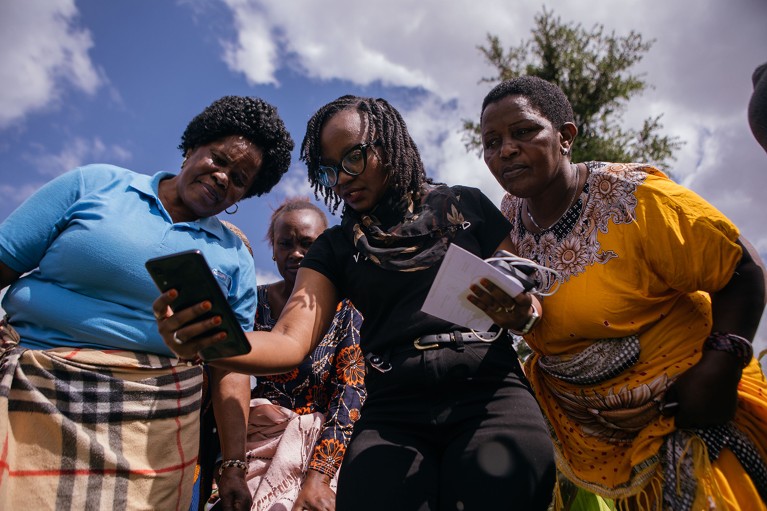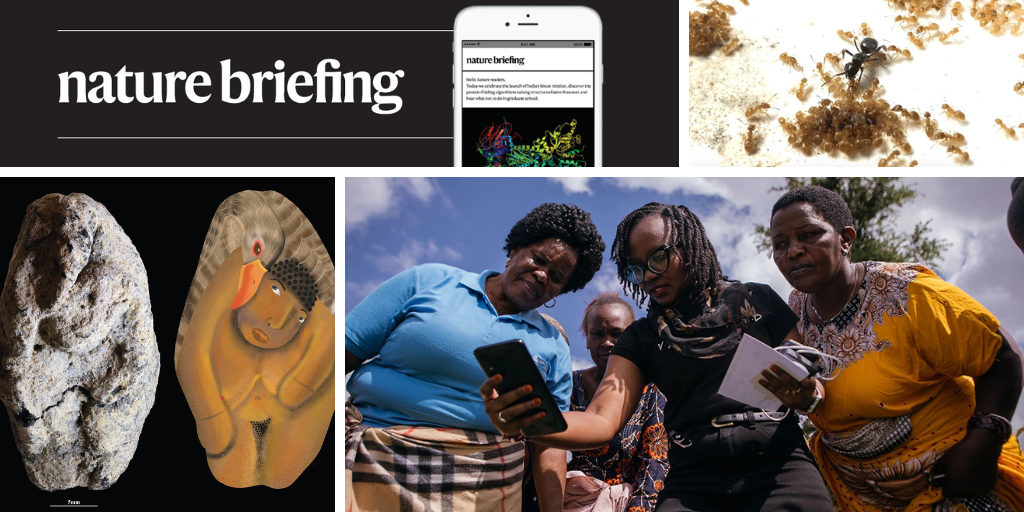You have full access to this article via your institution.
Hello Nature readers, would you like to get this Briefing in your inbox free every day? Sign up here.

Researchers believe that this clay figurine (left) might depict a woman with a goose perched on her back, shown in an artist’s reconstruction (right). (Laurent Davin)
Researchers suggest that a small clay figurine from Southwest Asia’s ancient Natufian culture could be one of the oldest documented depictions of a mythological scene. The approximately 12,000-year-old figure could depict a woman with a goose on her back, which researchers say might represent the imagined mating between a human and an animal spirit. “The scene itself — depicting a sexualized interaction between a human and an animal — is part of a long tradition in myth” and often symbolizes fertility or the sacredness of life, says anthropologist and study co-author Natalie Munro.
Reference: Proceedings of the National Academy of Sciences paper
Certain parasitic ants can take over an existing colony by tricking worker ants into killing their queen. Researchers found that a parasitic Lasius orientalis queen can infiltrate a colony of Lasius flavus ants by mingling with its workers to cloak itself in familiar scents. Once assimilated, the invader douses the L. flavus queen with a foul-smelling fluid, the scent of which marks it as an enemy and compels its workers to attack. With the L. flavus queen deposed, the invader seizes power and forces the workers to raise her eggs.
Reference: Current Biology paper

After an initial spray, the parasite flees as the workers attack their queen. Later, it returns to add another dab of fluid, which intensifies the frenzy. (Taku Shimada,Yuji Tanaka,Keizo Takasuka/Current Biology (CC BY 4.0))
Features & opinion
In Fair Doses, infectious-disease researcher Seth Berkley takes readers inside the race to distribute the COVID-19 vaccine around the world. The account comes straight from the horse’s mouth: in 2020, Berkley co-founded COVAX — a worldwide initiative to access, purchase and deliver billions of doses to those living in low- and middle-income countries. In telling the story of COVAX’s huge ambition, and its successes, Berkley gives readers “a ‘booster shot’ to restore awareness” of the importance of vaccines, writes public-health expert William Hausdorff in his review.
In many places, “women are the de facto main carers and custodians of community knowledge”, writes biologist Elma Kay, the managing director of the Belize Maya Forest Trust. “They are often in positions, paid or otherwise, to make their communities healthier, more prosperous and more peaceful.” But women do not always have seats at the table when decisions are made about funding and the setting of national priorities. Kay recommends more support for mentoring, and carefully implemented quotas to help achieve gender balance in the corridors of power.
Cosmologist George Smoot, who won the Nobel Prize for his discovery of variations in the cosmic microwave background, was a master experimentalist who put detectors on U-2 spy planes and on the breakthrough COBE satellite mission. The COBE data offered a transformative view of tiny fluctuations in the early Universe — a relic of the Big Bang and evidence for how everything eventually got so blobby and interesting. Three of Smoot’s former colleagues reveal that he insisted that the image depicting the discovery use the familiar red for hot and blue for cold, even though the physics of heat would put the colours the other way around — an example of Smoot’s passion for sharing science with the public. Smoot has died aged 80.
Where I work

Neema Mduma is a computer scientist at the Nelson Mandela African Institution of Science and Technology, Arusha, Tanzania.Credit: Kang-Chun Cheng for Nature
Machine-intelligence researcher Neema Mduma develops plant-health tracker apps enclaed by artificial-intelligence (AI) for farmers in Tanzania. One such app, KilimoAI, can analyse photographs of crops to detect possible disease symptoms. “My main goal is to empower farmers with early warning systems that help them to detect pests and diseases promptly, take timely action, boost yields and, ultimately, improve food security and livelihoods,” she says. “It’s about making expert agricultural knowledge more accessible.” (Nature | 3 min read)


